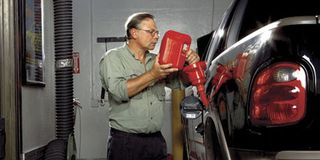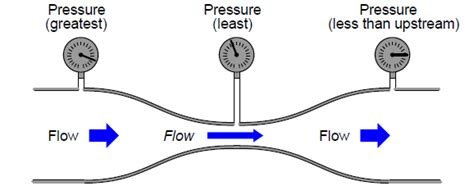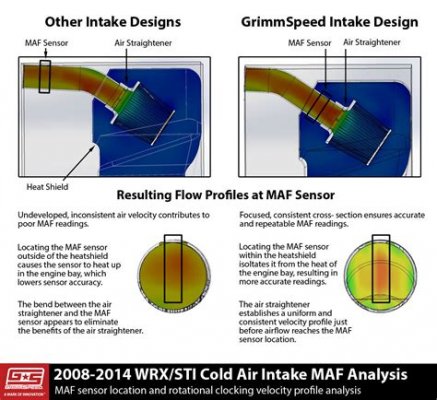Bit late to the party but my background might help. Smooth or laminar airflow is ALWAYS preferred for flow of any liquid (Yes, air is considered a liquid in This case). A laminar Flow or turbulent Flow depends on the liquid viscosity, density and it’s Reynolds Number. Laminar flow is characterized by smooth and orderly flow of different layers past in another. Laminar flow occurs at low fluid velocity and the transition point between Laminar and Turbulant flow is dependent of the above variables. As such, any obstructions or restrictions, say like an air intake system, will change the orderly flow of those layers and result in turbulant flow. k&N whole marketing gimmick is “straightening” air flow or making it more laminar. What they fail to realize is that while the filter MAY indeed do so, once the air gets into the intake system, those straightening effects are lost. Laminar flow is encouraged and maintained by smooth surfaces that do not interrupt those different layers of fluid flow. This is the concept behind a valve port and polish. Porting enlarges the valve intake cavity which decreases velocity due to removing restrictions like sharp turns resulting in turbulant flow and iencouraging laminar flow. The polish further reduces obstructions. Too much porting will result in an actual slowdown of fluid velocity resulting in worse performance. That’s why and valve guru or head builder use flow meter tools and nowadays fluid dynamics software to “dial in” he optimal dimensions. “Cold air intakes” don’t so much as make power due to lower air density, a modern ECU corrects for this, but it’s gains, if any, result from encouraging a laminar fluid flow. When throttle plates get gunked up, one reason for the power loss and efficiency decrease is due to the airflow becoming more turbulant resulting in decrease failed speed and the engine working harder. That lower speed will result in not only a more turbulant flow which interferes to an extent with fuel mixing, but also a velocity decrease results in less air entering the cylinder. The MAF and MAT sensors will say x but the airflow is y. As engines don’t have cylinder air density sensors, the ECU can potentially inject an incorrect fuel amount. Finally, as laminar flow is smoother, it flows with less force ie the engine vacuum is more “efficient” for lack of a better word. This results in less workload by the engine and less fuel consumption. Oh, and restriction CAN increase fluid flow, like venturis, but if not engineered into the system, can be counterproductive. I attached a picture to help sell that point.




